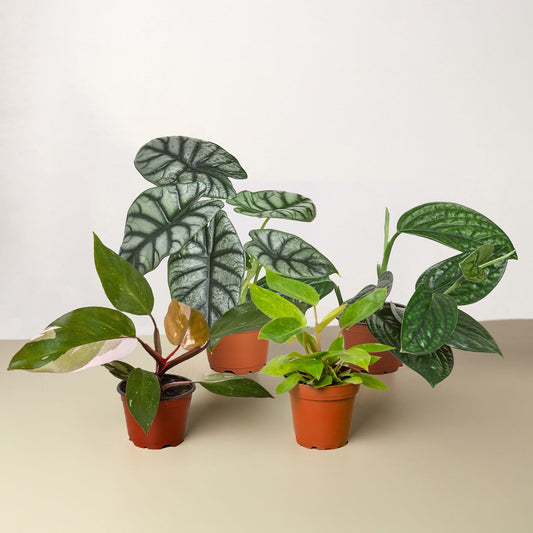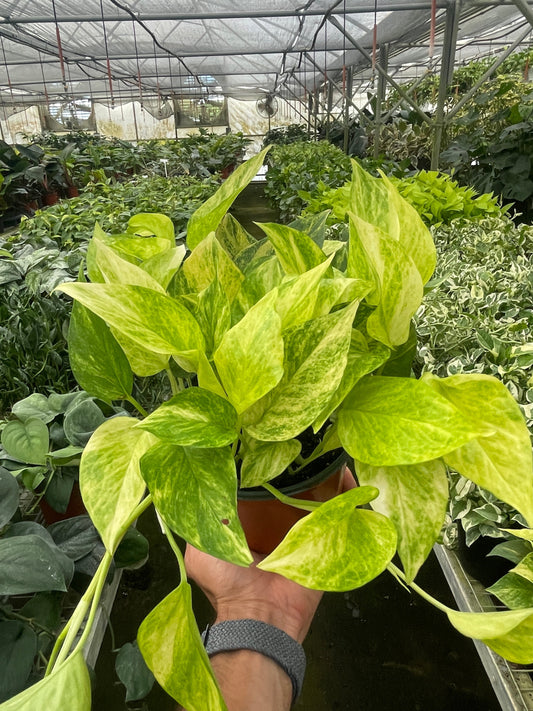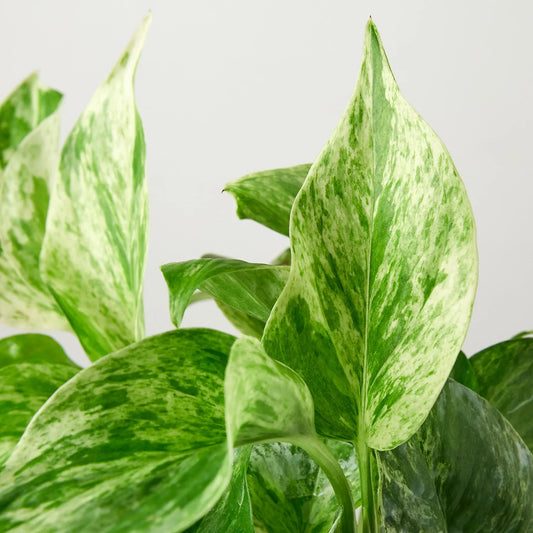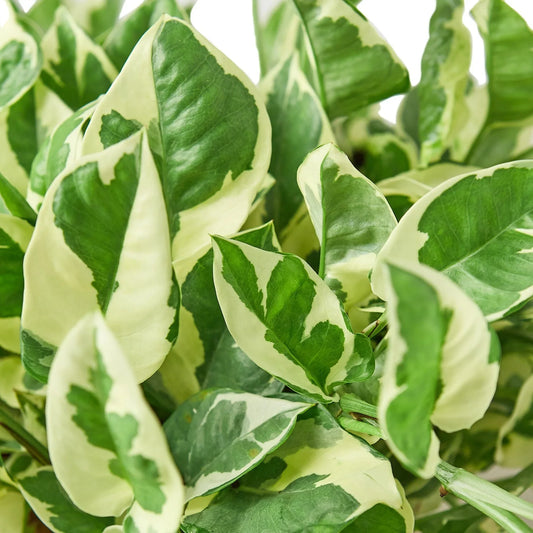Why Are My Pygmy Date Palm Leaves Turning Brown?
Cafe Planta Team
Few things are as disheartening for plant parents as watching the vibrant green leaves of a beloved pygmy date palm turn brown. These miniature palms, with their graceful fronds and compact size, are a delightful addition to any home. But when browning occurs, it can be a sign that something's amiss with your plant care routine.
In this article, we'll explore the common reasons why pygmy date palm leaves might be turning brown and discuss practical solutions to help you restore your plant to its former glory. From watering habits to pest control, we've got you covered with tips and insights to keep your palm looking its best.
Improper Watering Practices
Watering is often the first suspect when leaves start to turn brown. It's a bit like the Goldilocks principle—too much or too little can cause issues, but getting it just right is key. Pygmy date palms thrive in well-drained soil, so it's important to strike a balance.
First, let's talk about overwatering. If your palm's leaves are turning brown and feel mushy, it might be a sign of root rot, which is often caused by waterlogged soil. This is especially common if your plant’s pot lacks drainage holes. To remedy this, ensure your pot has proper drainage and try watering only when the top inch of soil feels dry to the touch.
On the flip side, underwatering can also turn leaves brown. If the soil is too dry, the tips of the leaves might start to crisp and brown. This is where a consistent watering schedule comes in handy. Consider setting a reminder to check your plant every week to see if it needs a drink.
One trick is to use a moisture meter, which can help you determine the exact moisture level in your plant’s soil. This tool can be a game-changer for those who struggle with watering routines.
Humidity Levels
Pygmy date palms are tropical plants that love humidity. If your home has dry air, particularly in the winter months when heaters are running, your plant might suffer. Low humidity can lead to browning leaves as the plant loses moisture too quickly.
To increase humidity around your palm, you can try a few simple strategies:
- Use a Humidifier: This is one of the most effective ways to maintain consistent humidity levels.
- Mist the Leaves: Lightly misting the leaves with water can provide temporary relief.
- Group Plants Together: Plants naturally release moisture into the air, creating a micro-environment that’s more humid.
- Place a Pebble Tray: Fill a shallow tray with water and pebbles, then set your plant pot on top, ensuring the pot isn’t directly sitting in water.
Experiment with these methods to see which works best for your space. Your palm will thank you!
Sunlight Exposure
Lighting plays a crucial role in the health of your pygmy date palm. These palms enjoy bright, indirect light, similar to the dappled sunlight they would receive in their native habitat. Too much direct sunlight, however, can scorch the leaves, turning them brown.
Conversely, if your plant isn’t getting enough light, the leaves might also turn brown as the plant struggles to photosynthesize effectively. A good spot for your palm is near a window with filtered light. East or west-facing windows are often ideal.
If you notice browning and suspect lighting is the issue, try adjusting your plant’s location. Remember, it might take a few weeks to see improvements, so be patient. If natural light is limited in your home, consider using a grow light to supplement your plant's needs.
Pests and Diseases
Pests like spider mites, scale, and mealybugs can wreak havoc on your pygmy date palm, causing leaves to turn brown and wilt. These pesky invaders can be tricky to spot, so it’s important to inspect your plant regularly.
To treat an infestation, you can:
- Remove Bugs Manually: Use a damp cloth or a quick blast of water to dislodge pests.
- Use Neem Oil: This natural pesticide can help control pests. Apply it to affected areas following the instructions on the bottle.
- Introduce Beneficial Insects: Ladybugs and predatory mites can help control pest populations naturally.
For diseases, such as fungal infections, ensure your plant has good air circulation and avoid overhead watering to reduce moisture on the leaves, which can promote disease.
Nutrient Deficiencies
Like any living thing, pygmy date palms need a balanced diet to stay healthy. If your palm’s leaves are turning brown, it might be lacking essential nutrients, particularly potassium, magnesium, or manganese.
Consider using a slow-release fertilizer designed for palms. You can apply it during the growing season, which typically runs from spring to summer. Be mindful not to over-fertilize, as this can lead to salt build-up in the soil and cause leaf burn.
For a more organic approach, compost or well-rotted manure can provide nutrients while improving soil health. Whichever route you choose, maintaining a nutrient-rich soil will support your palm's growth and vibrancy.
Temperature Extremes
Pygmy date palms prefer moderate temperatures, much like those found in their native tropical climates. If your home is too hot or too cold, your plant might show signs of stress, including browning leaves.
Try to keep your palm away from drafty windows, heaters, or air conditioning vents. Sudden temperature changes can shock your plant, leading to leaf damage. A room temperature between 60-80°F (15-27°C) is usually ideal for these palms.
For those living in particularly cold climates, consider moving your plant to a warmer spot during the winter months. On the other hand, if your home is too warm in the summer, ensure your palm has adequate ventilation.
Soil Quality
The quality of your soil can have a significant impact on your pygmy date palm's health. These plants prefer well-draining soil that holds moisture without becoming waterlogged. If the soil is too dense or compacted, it can lead to poor root development and browning leaves.
Consider using a soil mix specifically designed for palms or making your own by combining potting soil with sand or perlite to improve drainage. Repotting your palm every couple of years can also help refresh the soil and provide room for root growth.
If you suspect the soil is the culprit, gently remove your plant from its pot and check the roots. Healthy roots should be white and firm, while brown or mushy roots may indicate rot. In such cases, trim any damaged roots and repot your plant in fresh soil.
Natural Aging
Sometimes, browning leaves are just a natural part of your pygmy date palm’s lifecycle. As the plant grows, older leaves may turn brown and die off to make room for new growth. This is completely normal and nothing to worry about.
If you notice browning on the oldest leaves while new growth appears healthy, simply prune away the brown leaves to keep your plant looking tidy. Use clean, sharp scissors or pruning shears to make a clean cut at the base of the leaf stem.
Pruning not only helps maintain your plant’s appearance but can also encourage new growth, leading to a fuller, more vibrant plant in the long run.
Final Thoughts
There are several reasons your pygmy date palm leaves might be turning brown, from watering issues to pest problems. By identifying the root cause and making some adjustments to your care routine, you can help your palm thrive once again.
At Cafe Planta, we love helping plant people find the perfect additions to their homes. If you're ever unsure about your plant care, feel free to email us or send us a message on Instagram. We believe plants bring people closer to nature and each other. Whether you're a seasoned plant parent or just starting your journey, we're here to help you cultivate a thriving indoor garden.



















